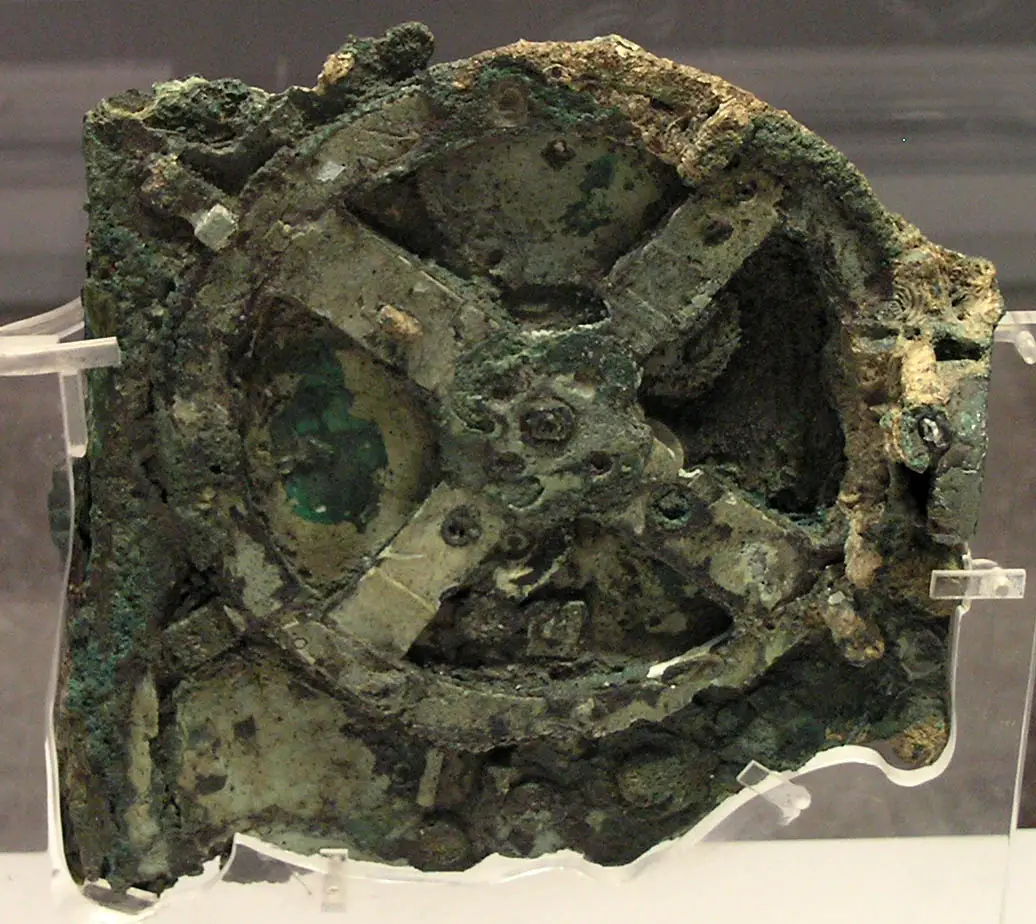The Antikythera mechanism is a remarkable feat from ancient Greece, often hailed as the earliest known analog computer. Its intricate design and craftsmanship hint at the existence of earlier versions during the Hellenistic period. Constructed using advanced theories of mathematics and astronomy developed by Greek scholars around the second century BC, it is believed to have been built in the late 2nd century BC or early 1st century BC.
Today, only a third of the original mechanism remains, fragmented into 82 pieces, with 30 corroded bronze gearwheels among them. In 2005, Microfocus X-ray Computed Tomography provided insight into the mechanism’s rear structure, yet the front remained largely unresolved. However, the X-ray scans unveiled inscriptions detailing the movements of celestial bodies, including the Sun, Moon, and known planets of antiquity, presenting an ancient Greek depiction of the cosmos.
Describing intricate planetary cycles, these inscriptions prompted a reevaluation of the mechanism’s functioning. Despite numerous attempts at reconstruction, none had successfully aligned with the uncovered data. Recent discoveries have led to a new model reconciling the evidence, shedding light on the genius behind its creation.
This intricate 3D puzzle combines elements from Babylonian astronomy, mathematical principles from Plato’s Academy, and ancient Greek astronomical theories, showcasing the ingenuity of ancient Greek civilization.

Numerous attempts have been made to understand and reconstruct the ancient Greek Cosmos depicted by the Antikythera mechanism, yet many have fallen short of aligning with the available evidence. In the early 20th century, Rehm’s research notes introduced the concept of the Mein Planetarium, featuring a ring display for the planets, though mechanically flawed due to insufficient data. In “Gears from the Greeks,” Price proposed missing gearing mechanisms to calculate planetary motions but did not execute a reconstruction.
Wright’s subsequent efforts resulted in the first functional system that accurately calculated planetary motions and periods, featuring a coaxial pointer display of the Cosmos. While this proved mechanical feasibility, later attempts by Freeth, Jones, Carman, Thorndike, and Evans simplified the gearing but lacked comprehensive planetary data. Previous reconstructions often utilized pointers for planetary displays, leading to parallax issues and inconsistencies with inscriptions.
These models, while innovative, fail to align with all available data fully. The complexities of the Antikythera mechanism challenge modern scholars to reconcile its intricate design with ancient astronomical knowledge, hinting at the remarkable sophistication of ancient Greek civilization.
Avid Writer with invaluable knowledge of Humanity!
Upcoming historian with over 30 million views online.
“You make your own life.”





